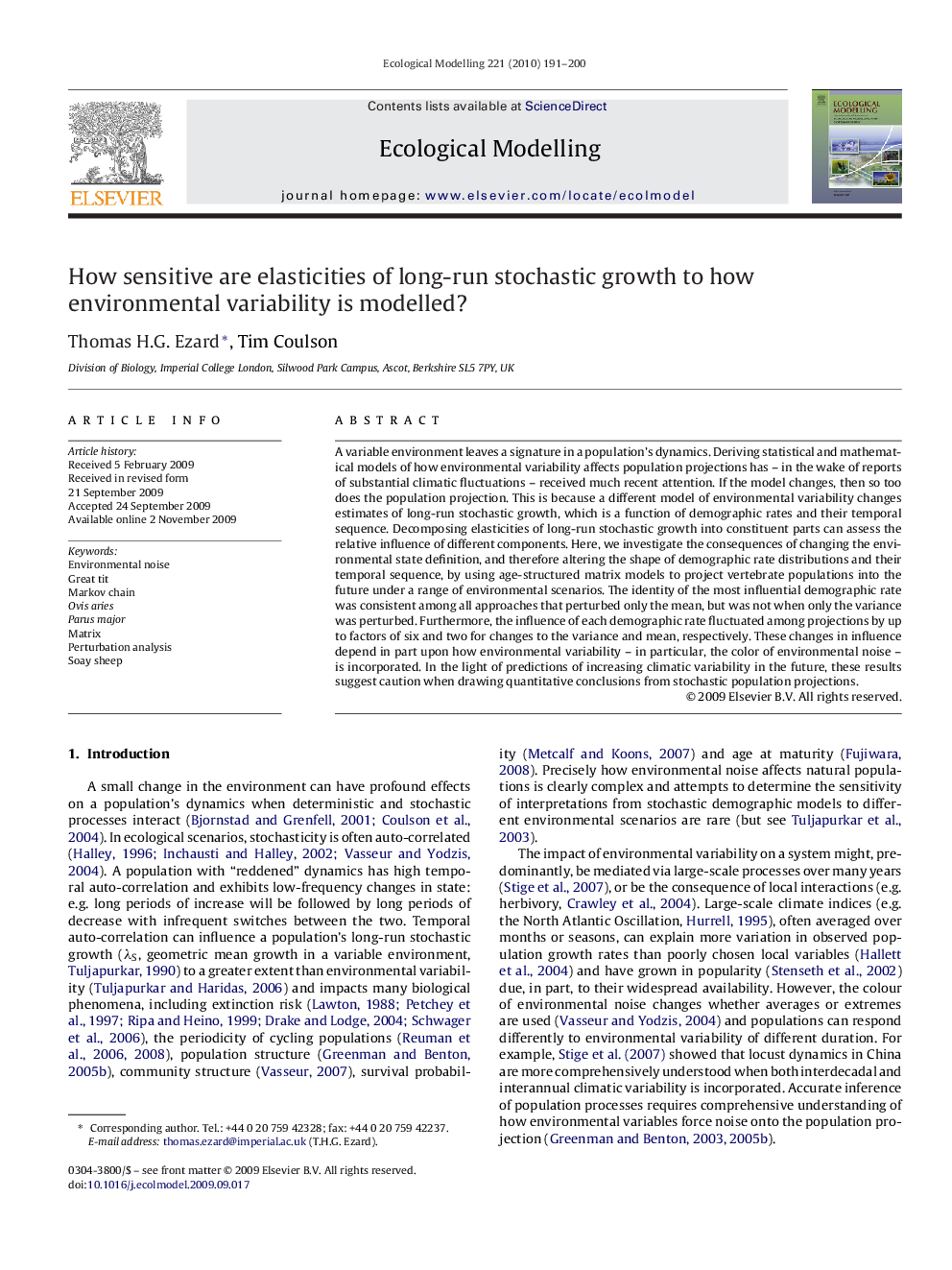| Article ID | Journal | Published Year | Pages | File Type |
|---|---|---|---|---|
| 4377483 | Ecological Modelling | 2010 | 10 Pages |
Abstract
A variable environment leaves a signature in a population's dynamics. Deriving statistical and mathematical models of how environmental variability affects population projections has - in the wake of reports of substantial climatic fluctuations - received much recent attention. If the model changes, then so too does the population projection. This is because a different model of environmental variability changes estimates of long-run stochastic growth, which is a function of demographic rates and their temporal sequence. Decomposing elasticities of long-run stochastic growth into constituent parts can assess the relative influence of different components. Here, we investigate the consequences of changing the environmental state definition, and therefore altering the shape of demographic rate distributions and their temporal sequence, by using age-structured matrix models to project vertebrate populations into the future under a range of environmental scenarios. The identity of the most influential demographic rate was consistent among all approaches that perturbed only the mean, but was not when only the variance was perturbed. Furthermore, the influence of each demographic rate fluctuated among projections by up to factors of six and two for changes to the variance and mean, respectively. These changes in influence depend in part upon how environmental variability - in particular, the color of environmental noise - is incorporated. In the light of predictions of increasing climatic variability in the future, these results suggest caution when drawing quantitative conclusions from stochastic population projections.
Keywords
Related Topics
Life Sciences
Agricultural and Biological Sciences
Ecology, Evolution, Behavior and Systematics
Authors
Thomas H.G. Ezard, Tim Coulson,
